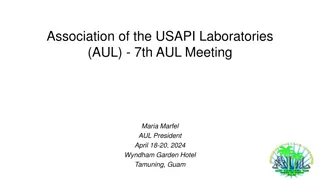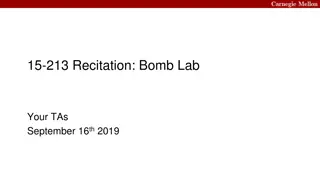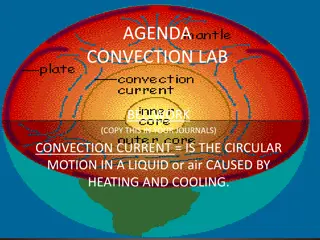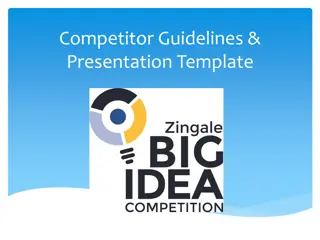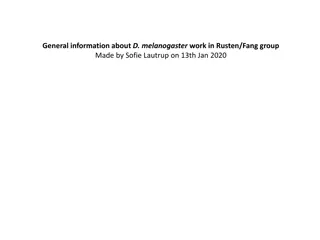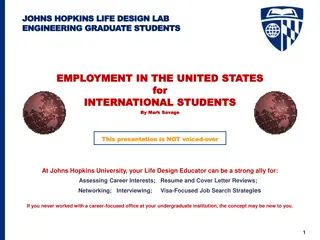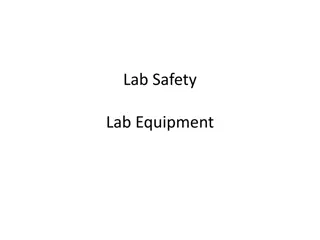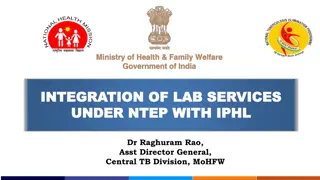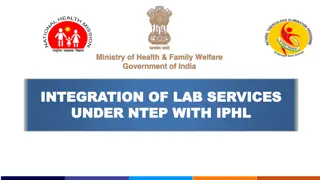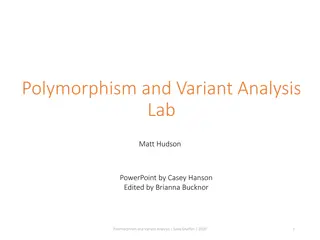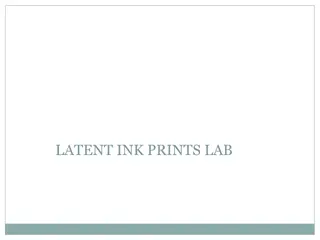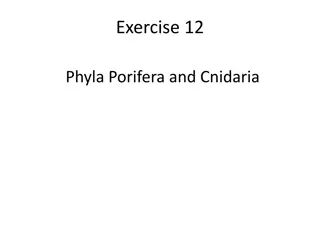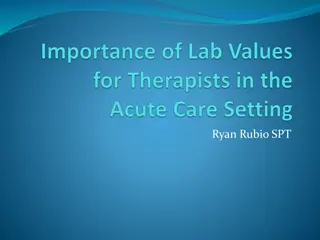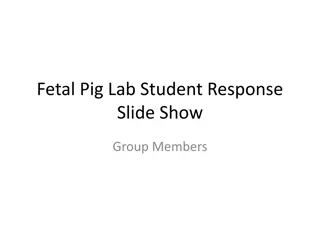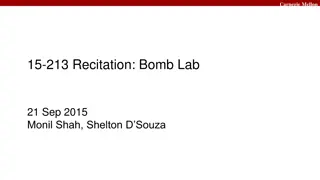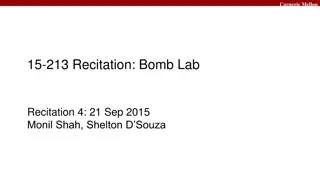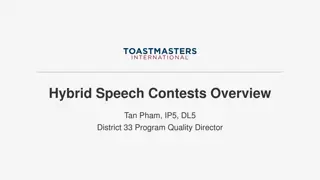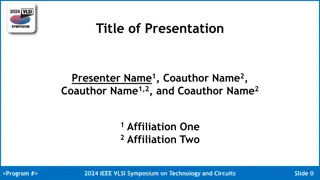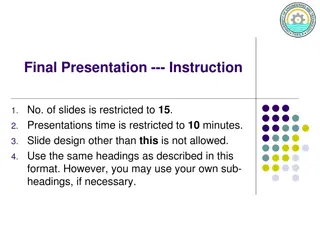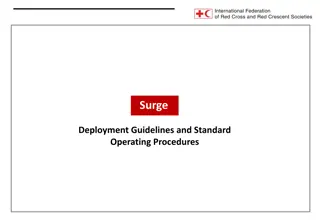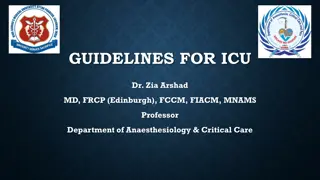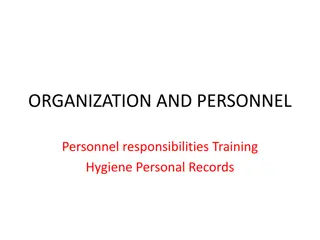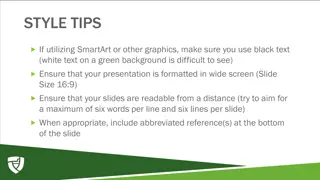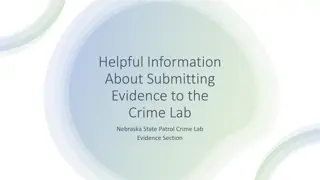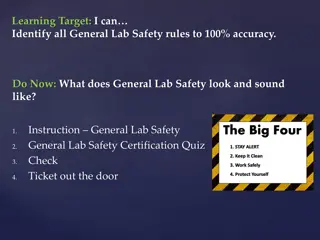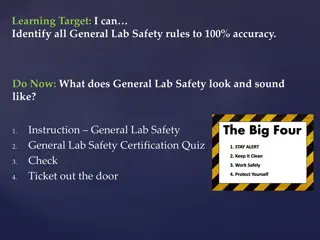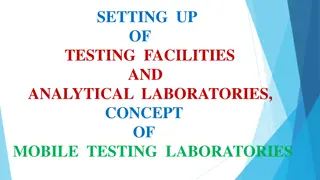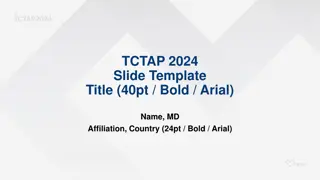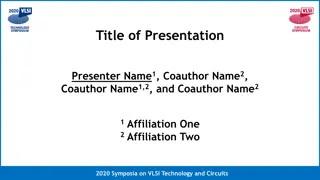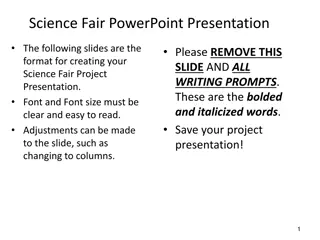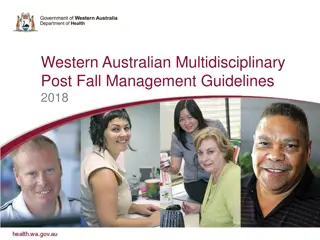Guidelines for Lab Presentation Format
Lab presentations should be concise, lasting about 5 minutes, followed by feedback. Each presentation should have a title slide, overview, experimental objective, introduction, background information, materials, procedure, data/observations, and conclusion. The team must discuss the experiment's goals, importance in engineering, and provide relevant scientific background. The materials used, experimental procedure, and results should be clearly outlined. Encouragement and learning from each other are key aspects of the presentation format.
Download Presentation

Please find below an Image/Link to download the presentation.
The content on the website is provided AS IS for your information and personal use only. It may not be sold, licensed, or shared on other websites without obtaining consent from the author. Download presentation by click this link. If you encounter any issues during the download, it is possible that the publisher has removed the file from their server.
E N D
Presentation Transcript
Recitation Presentation Format
Things to keep in mind Lab presentations are only about 5 minutes Will be hard for you to fit in Presentation will be followed by comments from faculty member and Recitation TA After comments, exit to a round of applause from the other groups Learn from each other, encourage each other
Title Slide Lab Number and Title Course Number, Name, and Section Date Experiment was done Date presentation is due Team Members Names
Overview Experimental Objective Introduction Background Information Materials Procedure Data/Observation Results Conclusion
Experimental Objective Discuss: What are you trying to achieve by conducting the experiment What is/are the scientific goal/goals of this experiment Note here if this particular experiment is a competition
Introduction Discuss: Why this particular topic is important in Engineering How can the this particular topic make our life easier or better Examples of applications of this topic
Background Information In this section you should discuss the scientific background of the experiment You MUST include all that apply: The main concepts of the experiment Theories Equations Pictures Include only RELEVANT material
Material List of materials used in the experiment Please include only the material that you think contributed to the outcome of the experiment. Use numbering or bullets
Procedure Give a description of how you performed the experiment: Steps followed during the lab Equipment and materials used to get the desired result Can include pictures of equipment Limit to 1 or 2 slides
Data/Observation Tables Graphs Pictures Note: Every picture/diagram must have a description of what it is as well as the name. Every graph or chart must have a title. Label axes. What you saw and recorded
Results Discuss: 1. Calculations you performed on the data you observed 2. Did you get the expected results? Why? Why not? 3. What contributed to the outcome of the experiment. (e.g., materials, equipment, TAs) NOTE: You should always refer to your data as a proof of your results.
Conclusion Was the experiment successful? Why? Why not? What objectives were achieved? For competitions, what place were you? What improvements (if any) can you suggest?
Keys to Success Don t try to put too much on one slide Except for overview, try to limit to 8 lines per slide Don t use Times New Roman (or any serif font) Arial is a good choice Make text large enough to be seen in the back row easily
More Keys To Success Use a background with a good contrast Light text on dark background is good Don t use a background that s busy Highly patterned background makes text hard to read Limit number of colors on a slide Don t make an Easter Egg !
Even More Keys to Success Graphics are good to include on a slide Clip art, pictures, etc. Should not dominate the slide, just add interest Pictures of your work are especially good Digital cameras are in the labs TAs can take still or moving pictures for you You can also use the scanners in the labs
The Final Keys Slides should be self-explanatory You shouldn t have to point to anything If you do, make a caption with an arrow Caption Diagram
Deadly Errors Presentations should not have obvious spelling errors Usually shown via red underline when you make the presentation Avoid less obvious errors (usually shown via green underline) Tolerance for less obvious errors will decrease as the term progresses Your faculty member and writing consultant will point them out listen!
How to Give the Presentation Face the audience, not the screen! If you re properly prepared, you should not have to read the slide! Speak up! If you mumble, people will be straining to hear you, making mistakes worse If you stumble over something, just keep going It s OK to take quick looks at the screen
Presentation Tips Put the presentation on your laptop Don t rely on running the presentation using the wireless LAN It s unreliable and frequently slow Before you make your presentation, run through it once PowerPoint will run faster Practice your presentation out loud Flaws will be more obvious
Preparation You should arrive at the recitation with the presentation complete No working on the presentation during the class! You should bring a hardcopy of the presentation with you at the start of the class give it to the TA Don t show up for class late! Some teachers lock the door!
Disaster Preparation Sometimes there s a major failure Laptop dies Projector fails Lights can t dim Be prepared! Be ready to give the presentation using whiteboard and markers Audience will know you re improvising, and that the presentation won t be as good
Further Information The online EG Manual has a section called Technical Presentations Read it! More detail on what s here A wealth of material on style and how to get a good grade! You are expected to know this material URL: http://egmanual.poly.edu
Classroom Etiquette Laptops should be closed, or dormant during the class Laptop used for presentations can be on All others off No fooling around! No instant messaging! No email! No Web browsing! Infractions will get you a zero for the class






